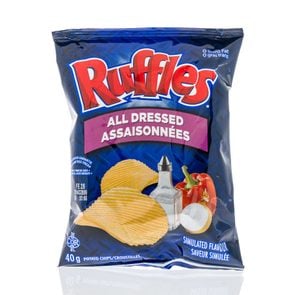What Does Kit Kat Stand For?

This is how Kit Kat bars got their iconic name.
Kit Kat, with its crispy wafer layers, smooth chocolate coating and unmistakable crunch, is a classic candy bar—top tier in most Halloween candy collections. You don’t need a holiday to snack on a Kit Kat, though; according to Nestle, more than 1 billion Kit Kats are consumed each year in the UK alone. That’s a lot of chocolate bars!
This confection is enjoyed around the world, no doubt about it. The brand is always coming up with fresh takes on the original Kit Kat, too, like Pumpkin Pie and Mocha flavours. Because we enjoy this candy bar so much, we can’t help but wonder—what does Kit Kat stand for?
What people think “Kit Kat” stands for
Truth be told, there are many theories behind the Kit Kat bar’s name.
Some claim the treat is named after a club in England, called the Kit-Cat, where Sir Godfrey Kneller’s paintings of club members hung in the late 1600s and early 1700s. This club had low ceilings, so it could only accommodate paintings of a specific size, historically referred to as “kit-cat size.”
The term “kit-cat” or “kit-kat” was used elsewhere in the 17th and 18th century. It was also the name of a magazine published out of Pennsylvania, by Keighton Bros. publishing. The print was “a weekly magazine for the home” and sold subscriptions for 50 cents.
Even more theories exist, though most are less popular. But the question remains—how do we know what’s true?
What does it really mean?
According to Nestle, the company that produces the beloved Kit Kat bar, a confectioner named Joseph Rowntree officially coined the name and started selling the treat in 1935.
Nestle shares that the “name first appeared on a boxed assortment of chocolates that Rowntree’s made during the 1920s.” That name came from an 18th century Whig literary club titled after a man named Christopher Catling—or Kit Cat. We’ll have to take Nestle’s word on this one!
Next, check out the real reason why maple syrup bottles have those tiny handles.






